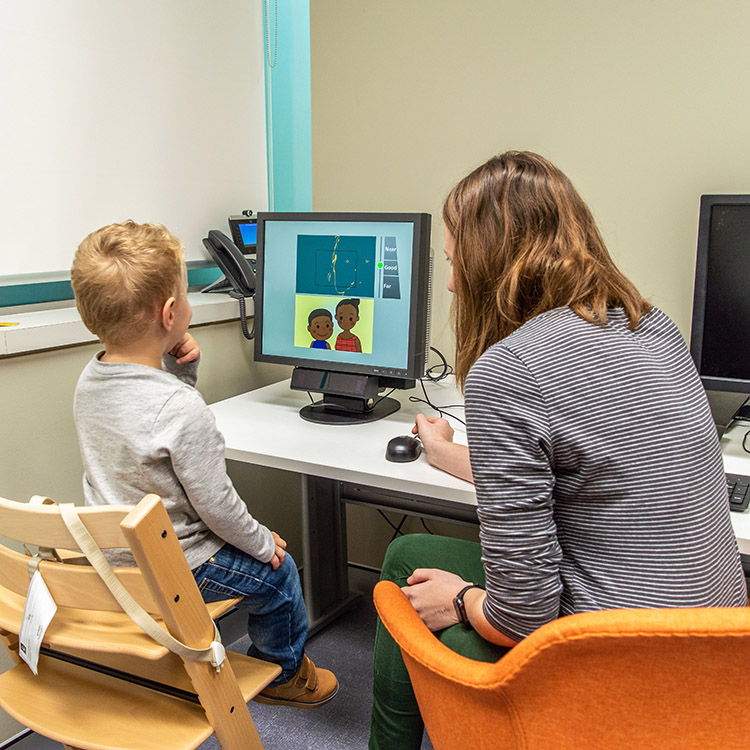Search

Our families have the opportunity to be involved in autism research conducted at CliniKids.
Research
Paediatric post-grommets surgery review: Audiology-led clinicOtitis media has a high prevalence in childhood, and grommet insertion is the most common surgical treatment for OM. The public health system in Australia faces considerable strains, including high demand for Ear, Nose and Throat specialists. Extending the scope of practice for audiologists to manage post-operative care for children receiving grommets has the potential to alleviate this burden.
Research
Respiratory and chest wall mechanics in very preterm infantsData on static compliance of the chest wall (Ccw) in preterm infants are scarce. We characterized the static compliance of the lung and Ccw to determine their relative contribution to static compliance of the respiratory system in very preterm infants at 36 wk postmenstrual age. We also aimed to investigate how these compliances were influenced by the presence of bronchopulmonary dysplasia and impacted breathing variables.
Research
Urinary Ferritin as a Noninvasive Means of Assessing Iron Status in Young ChildrenIron deficiency (ID) is the most common nutritional deficiency affecting young children. Serum ferritin concentration is the preferred biomarker for measuring iron status because it reflects iron stores; however, blood collection can be distressing for young children and can be logistically difficult. A noninvasive means to measure iron status would be attractive to either diagnose or screen for ID in young children.
Research
Psychometric properties of the Perth emotional labour scale: Preliminary support for a new measure with theoretical implicationsEmotional labour is the process by which people regulate emotions congruently with occupational requirements. Research consistently links emotional labour to greater levels of burnout. However, we argue this literature is potentially confounded by measurement error.
Research
“Broken fragments or a breathtaking mosaic”: A mixed methods study of self-reported attributes and aspirations of siblings of individuals with and without neurodevelopmental conditionsSiblings of individuals with neurodevelopmental conditions (NDCs) experience distinct challenges and have unique strengths compared to siblings of individuals without NDCs.
Research
Epidemiology and Outcomes of Neonatal Sepsis: Experience from a Tertiary Australian NICUNeonatal sepsis is associated with significant mortality and morbidity. Low-middle-income countries are disproportionately affected, but late-onset sepsis still occurs in up to 20% of infants <28 weeks in high-income countries. Understanding site-specific data is vital to guide management.
Research
Global burden of 288 causes of death and life expectancy decomposition in 204 countries and territories and 811 subnational locations, 1990-2021Regular, detailed reporting on population health by underlying cause of death is fundamental for public health decision making. Cause-specific estimates of mortality and the subsequent effects on life expectancy worldwide are valuable metrics to gauge progress in reducing mortality rates. These estimates are particularly important following large-scale mortality spikes, such as the COVID-19 pandemic. When systematically analysed, mortality rates and life expectancy allow comparisons of the consequences of causes of death globally and over time, providing a nuanced understanding of the effect of these causes on global populations.
Research
A model of care for Aboriginal and Torres Strait Islander prisoner health and wellbeing in South AustraliaAboriginal and Torres Strait Islander (Aboriginal) people are overrepresented in Australian prisons, where they experience complex health needs. A model of care was designed to respond to the broad needs of the Aboriginal prisoner population within the nine adult prisons across South Australia. The purpose of this paper is to describe the methods and findings of the Model of Care for Aboriginal and Torres Strait Islander Prisoner Health and Wellbeing for South Australia.
Research
Study of pediatric appendicitis scores and management strategies: A prospective observational feasibility studyThe objective was to investigate the feasibility of prospectively validating multiple clinical prediction scores for pediatric appendicitis in an Australian pediatric emergency department.
